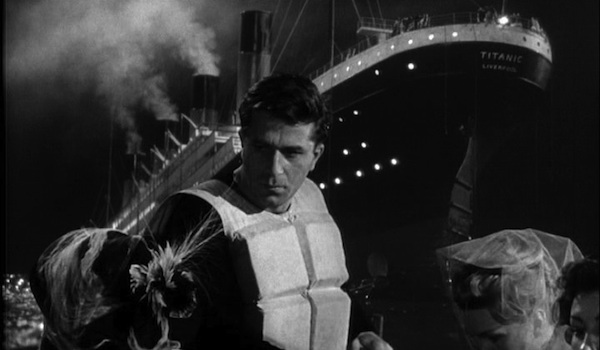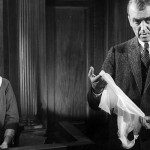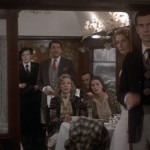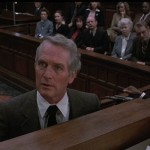A Night to Remember Review
When Titanic was released in 1997, it was hailed as the ultimate “four-quadrant” movie. It was a rare beast that managed to appeal to young men, young women, and adults, both male and female. From the star-crossed lovers that were Jack and Rose to the epic and spectacular sinking of the ship, there was something for everyone.
A Night to Remember, a 1958 film directed by Roy Ward Baker, is a close cousin of James Cameron‘s Oscar-winning mega-blockbuster. Both films recount the final days of the so-called “unsinkable” ship, but while Titanic had clear four-quadrant appeal, A Night to Remember might be just a one-quadrant movie—half a quadrant probably. Those who appreciate methodically paced docudramas will love A Night to Remember. Others, no doubt, will find the proceedings dull, but I greatly admired Baker’s generally hands-off approach to the material. It’s compelling enough that embellishment seems more distracting than necessary. A Night to Remember is so good, in fact, that it instantly made me appreciate Titanic (a film I really like) a little less. Why tell this story any other way when Baker does it almost perfectly?
The film is based on a novel of the same name by Walter Lord. Adapted by screenwriter Eric Ambler, the story is told primary form the point of view of the Titanic’s second officer, Charles Lightoller (Kenneth More). We watch as the first class, second class, and steerage passengers board the ship, and Captain Edward J. Smith (Laurence Naismith) and Thomas Andrews (Michael Goodliffe), the ship’s builder, talk us through their plans for the journey. Early on, their pressured by J. Bruce Ismay (Frank Lawton), director of the White Star Line, to push the Titanic as fast as they can, thinking an early port in America can only mean good things for business. But, as you know, they encounter ice not long into their journey. They fail to truly heed the warnings of other ships in the area, and when an iceberg strikes her starboard side, Titanic begins to sink. So her crew begins to load up the life boats with women and children, while the band plays Titanic to her slow (but not slow enough) death.
Fans of Titanic will recognize a number of familiar names and faces. And several memorable details remain (Andrews fixing the clocks while the ship goes down, Ismay sinking his head in disgrace after boarding a life boat and abandoning the men). Unlike Cameron’s film, however, the ship in A Night to Remember sinks in an incredibly unfussy manner. There’s hardly any non-diegetic music, and there aren’t any big shots of the ship falling apart. Part of this, of course, has to do with the special effects limitations of the day (most of the mid-range shots of the ship are obviously models). But it remains an impressive-looking film—especially the exquisite first-class dining rooms and cabins.
Though Lightoller is certainly front and center in this enormous ensemble (which also includes, in very small roles, James Bond and Q, Sean Connery and Desmond Llewelyn), it’s a pretty anonymous lead performance. More isn’t to blame; He’s perfectly respectable. But the film is more about the ship, the peril, the story. Once the ship has sunk, Lightoller has a heroic few moments, but for the most part, acting is very much secondary in A Night to Remember.
The one story point present here that’s mostly absent in Titanic is the confusion surrounding the SS Californian and the RMS Carpathia. The former was within sight of the Titanic—stopped just ten miles away because of ice. But the communications officer was off duty, so the SOS messages were never received. The Carpathia, meanwhile, headed toward the sinking liner with all the urgency in the world, but the great distance between them meant upwards of 1,000 individuals would spend hours in the freezing water of the North Atlantic. We spend several scenes with the men in charge of these ships, which frankly don’t add a ton to the drama, the tension, or the scale of the main event. But they are interesting details that help paint a better picture of that fateful night, and that’s ultimately what this film is trying to accomplish.
A Night to Remember isn’t going to jump off the screen at you. Its lack of big moments isn’t a detriment, however, because as the ship takes its final plunge into the icy water, you’ll realize how effective Baker’s approach is. Its flaws are hard to even bring up because everything comes together so nicely in the end. Is it the best Titanic movie ever made? There are so many that it’s hard to say. Is it better than Cameron’s retelling of the story? Again, it’s like comparing apples and oranges. But with that film just hitting theaters once again (in 3D!), this one proves that being understated isn’t exactly a bad thing, and if pressed, I’ll stand in Baker’s corner.















